Содержание
- 2. Time Management Skills Presenter: Ms. Monesa Watts
- 3. Time Management Time management is straightforwardly defined as the management of time is straightforwardly defined as
- 4. Time Management But in a 2001 interview, David Allen observed: You can't manage time, it just
- 5. Time Management Time - the measured or measurable period during which an action, process, or condition
- 6. Time Management Questions? How much time do you have? What are your goals? Does free time
- 7. How much time do you have? There are 24 hours in a day. 7 days in
- 8. What are your goals? Make your goals specific and concrete. Set long-term and short-term goals? Set
- 9. Do you have a schedule? Set up your semester calendar. Review Syllabus for class schedules. Block
- 10. Set Priorities Which goals are important to you? Which goals are urgent? Assignments due at the
- 11. Most of the time we struggle to create a balance between: 1. Our Needs Eating, sleeping,
- 12. Finding Balance Find balance between: Academic schedule Social life Time alone
- 13. Procrastination Procrastination is a major obstacle that can prevent you from practicing good time management skills.
- 14. Ways of overcoming Procrastination 1. Make the Task Meaningful Ask yourself why the task is important
- 15. Time Management Tips Write things down. Don’t rely on memory Prioritize your list Plan your week.
- 16. Food for Thought Students who control and monitor their time give themselves the ability to be
- 17. Academic Survival at JSU Effective Note-Taking Presenter: LaTonya Robinson October 10, 2007
- 18. 5 C’s of Note-Taking Take Charge of Your Lectures Concentrate and Focus on the Material Listen
- 19. Take Charge of Your Lectures Commit to Class Pre-read material to be covered before class Identify
- 20. CONCENTRATE and focus on the material!!! Beware of Distractions Talking Daydreaming & Doodling Worrying Keep Mind
- 21. Listen Critically Be Ready for the Message Listen to Main Concepts Listen for New Ideas Ask
- 22. Connect and Capture Key Ideas Identify key words, themes and main points Relate Details to the
- 23. Choose the Note-Taking Style that’s Just Right for You! Use any strategy that will help the
- 24. Note-Taking Styles Outline Method The Cornell Method Paragraph (Summarizing) Method Fishbone Diagram (Listing) Method
- 25. The Outline Method Use headings and subheadings followed by course material Easiest method with organized lectures
- 26. The Cornell Method Divide your notepaper by drawing a vertical line 2 inches from the left
- 27. The Paragraph Method Often works best when a lot of notes are given in a short
- 28. The Fishbone Diagram The Problem or outcome is printed in the “head” of the fish. Identify
- 29. Other Note-Taking Tips Always date your notes! Paraphrase your notes! Don’t Erase Mistakes! For Lectures with
- 30. Questions Presentation pictures form Multi-media 2007
- 31. Surviving Test Anxiety Presented by Mrs. Carol J. Cooper Dr. Brenda K. Anderson
- 32. Signs of Anxiety: Headaches Rapid Heart Beat Anger Pacing Nausea Sweating Depression Fainting Negative Self-Talk
- 33. Test Anxiety Test Anxiety is common among college students! Test or performance anxiety typically occurs: in
- 34. Test Anxiety When psyched out and anxiety takes over, you may experience: distracting thoughts of failure
- 35. Some tips for reducing test anxiety There are several ways to make test anxiety more manageable:
- 36. ADDITIONAL COPING STRATEGIES The techniques for dealing with test or performance anxiety can be divided into
- 37. The day of the test: begin your day with a moderate breakfast and avoid coffee, try
- 38. Summary Remember, it is perfectly natural to experience test anxiety while in college. The main thing
- 39. Test-Taking Skills Mrs. F. Janelle Hannah-Jefferson Academic Advisor
- 40. First & Foremost… Put the test in perspective. Of course, you want to do your best,
- 41. Planning Your Approach Prepare physically for the exam. Prepare mentally for the exam. Find out about
- 42. Strategies for Various Tests One strategy that works for almost all tests: If an answer comes
- 43. Objective & Subjective Tests Objective tests include multiple choice matching true-false fill in the blank Subjective
- 44. Multiple Choice Strategies Read the question carefully and try to answer it before you read the
- 45. True-False Strategies Read the question carefully. Go with your hunch. Watch for key words: Absolutes (never,
- 46. Fill-in-the-Blank Strategies Read thoroughly to be sure what is being asked. Be brief and specific. Give
- 47. Essay Question Strategies Read the question carefully. What is the question asking for? Outline the key
- 48. Okay, you flunked it! Now recover your balance. Don’t let yourself become undone by one failure.
- 49. Tempted to cheat? Resist the Impulse Cheating can have ugly consequences: Cheaters struggle with a nagging
- 51. Скачать презентацию

















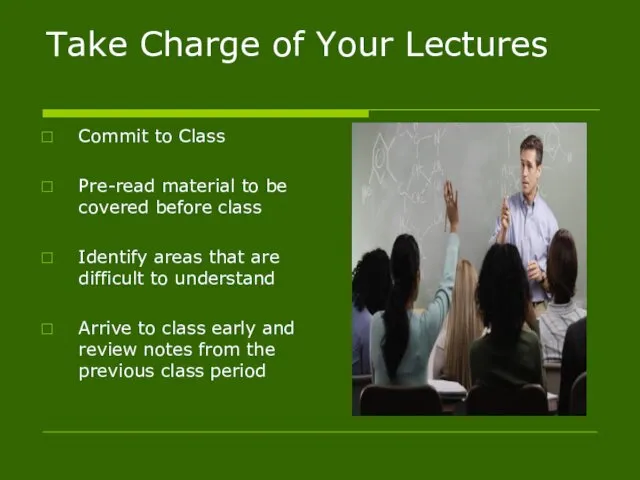

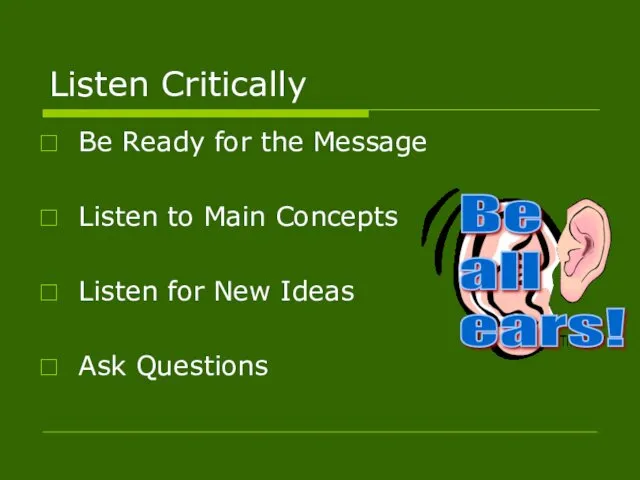
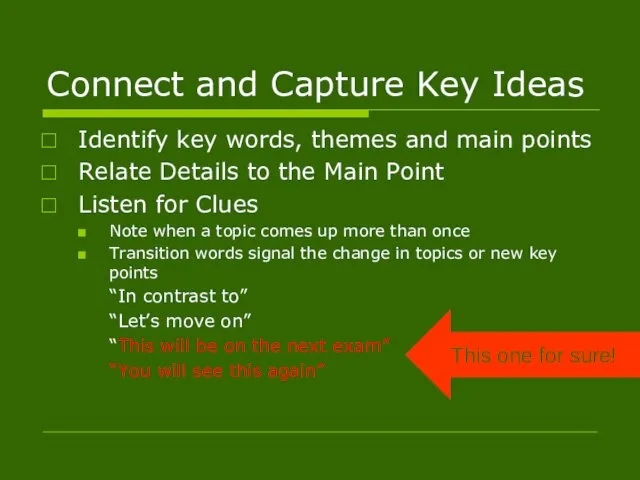

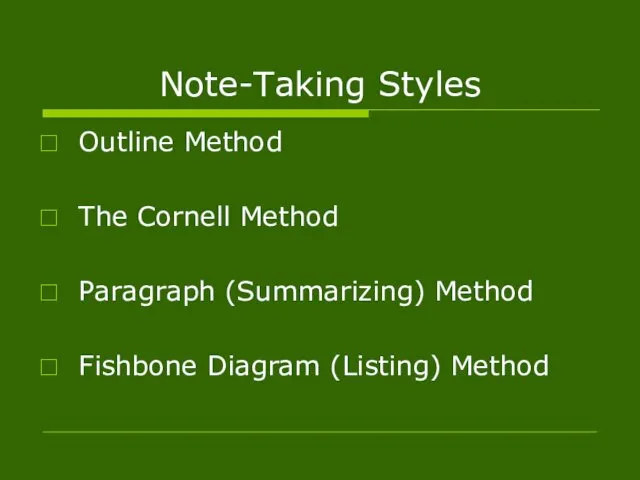
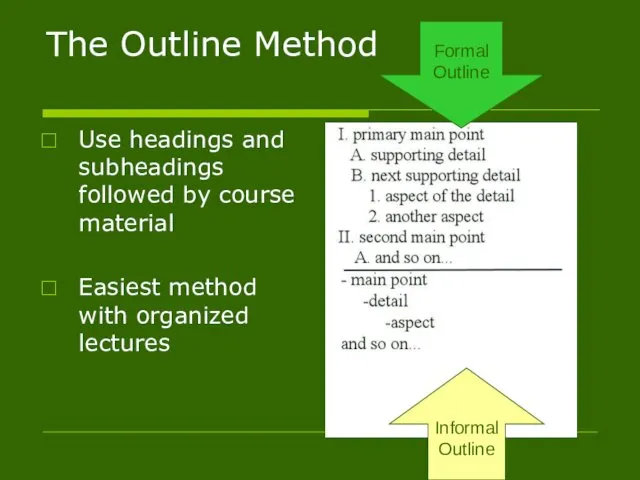
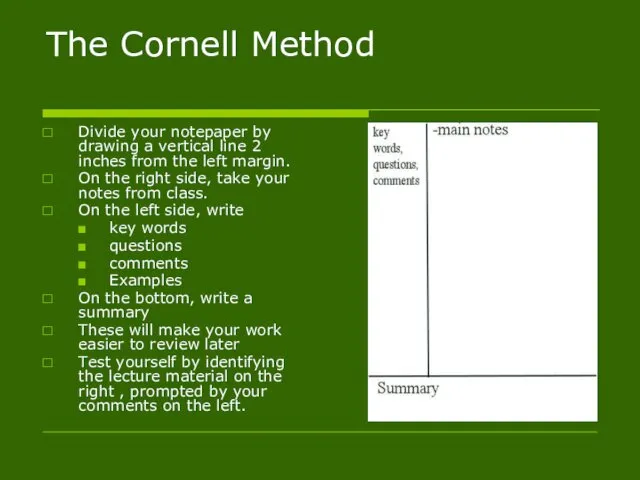
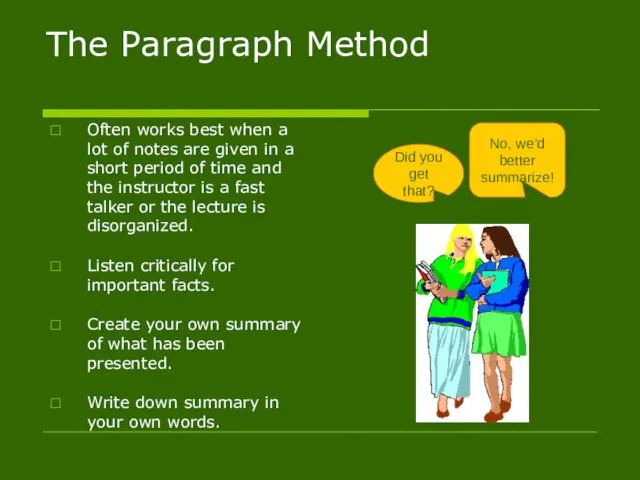
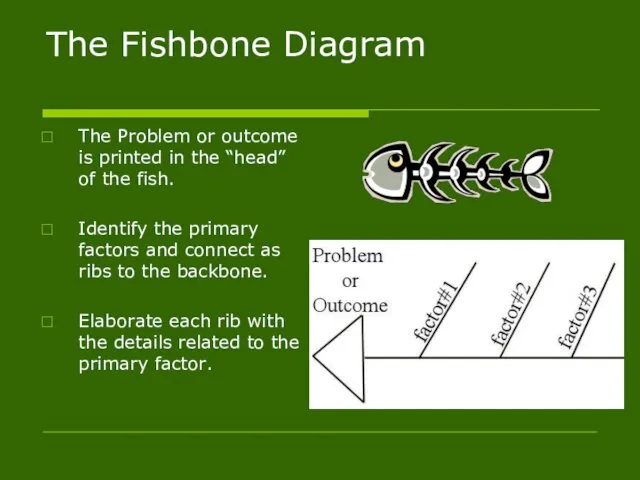
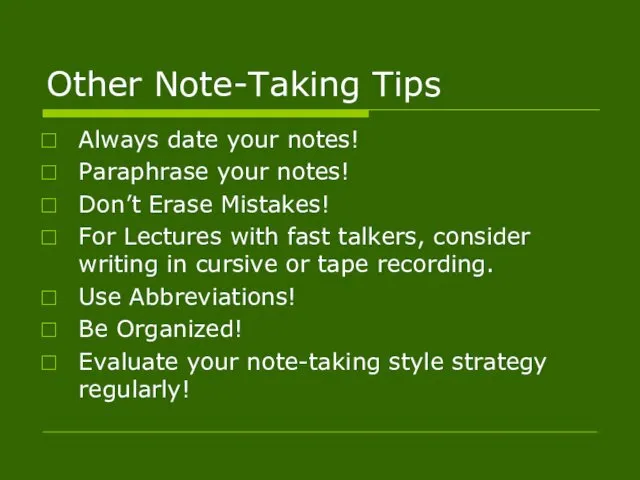
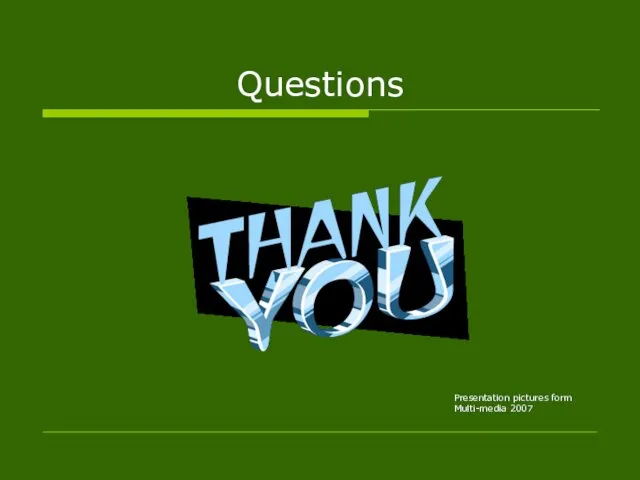
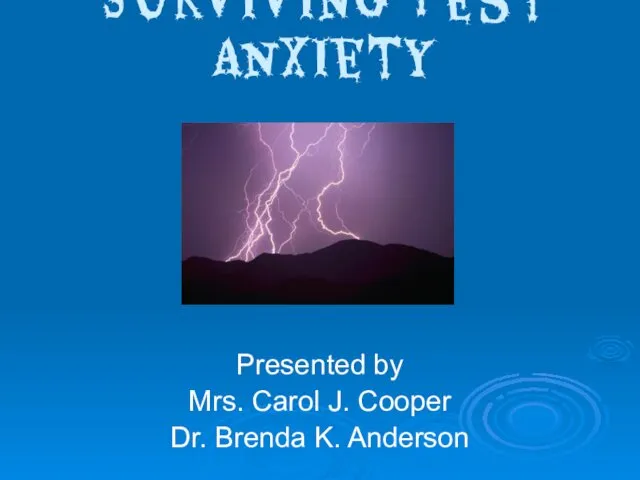

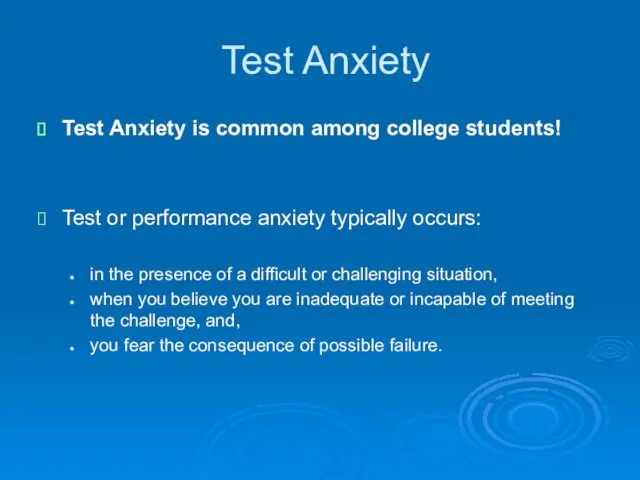
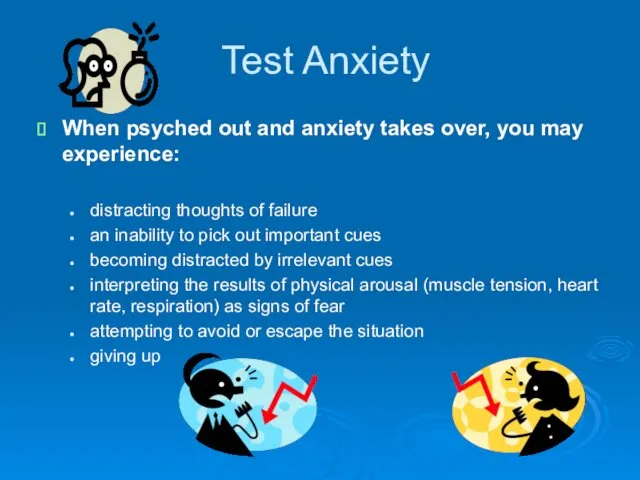
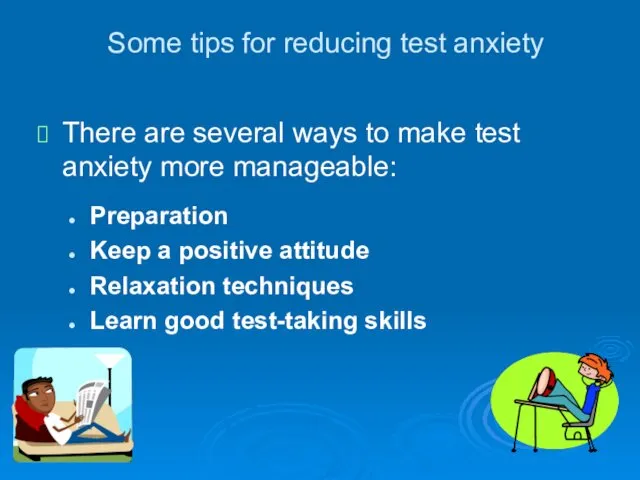
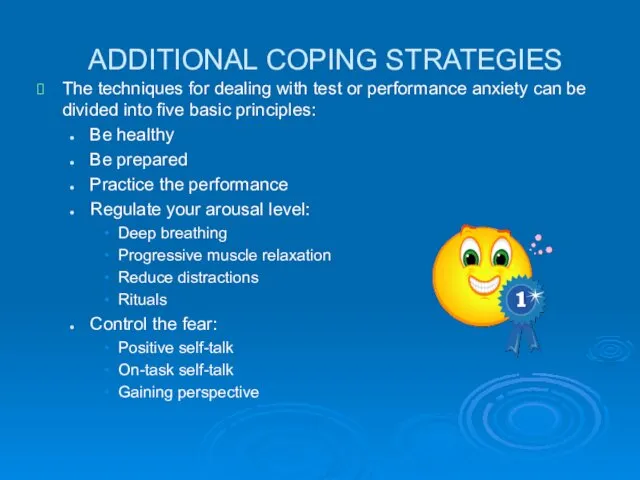
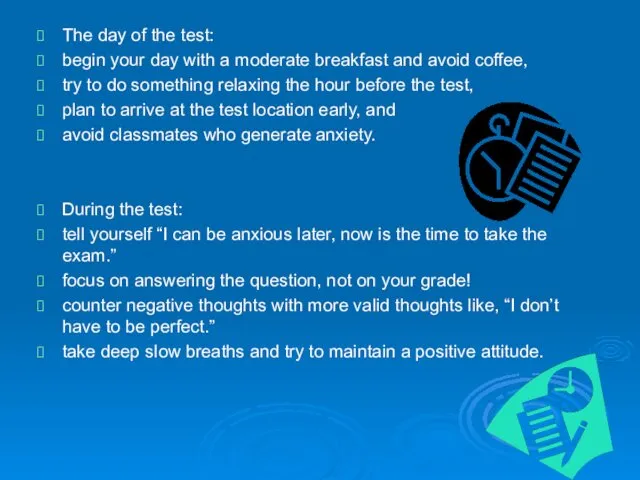
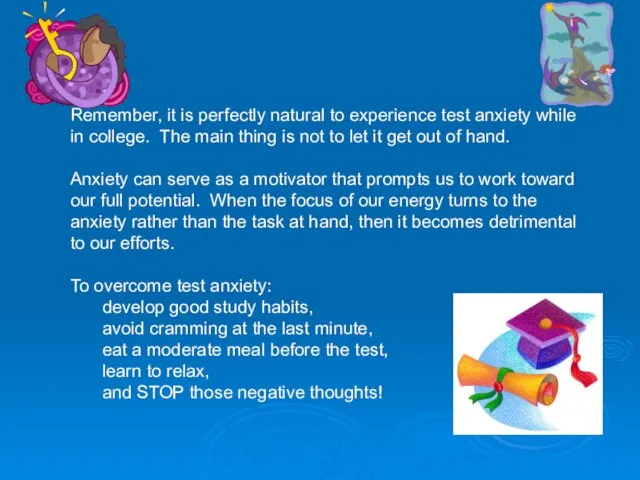
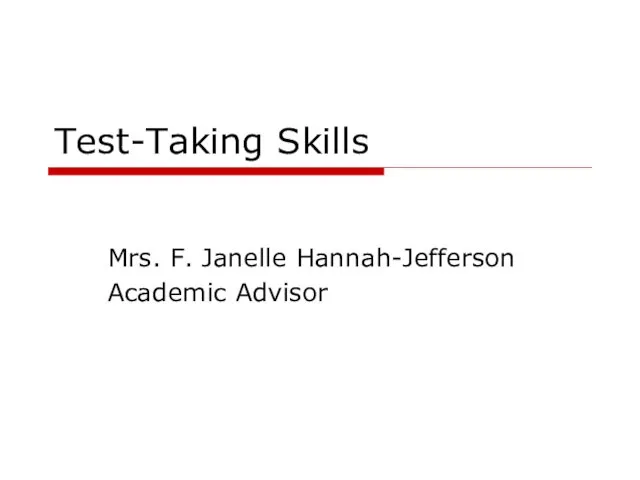
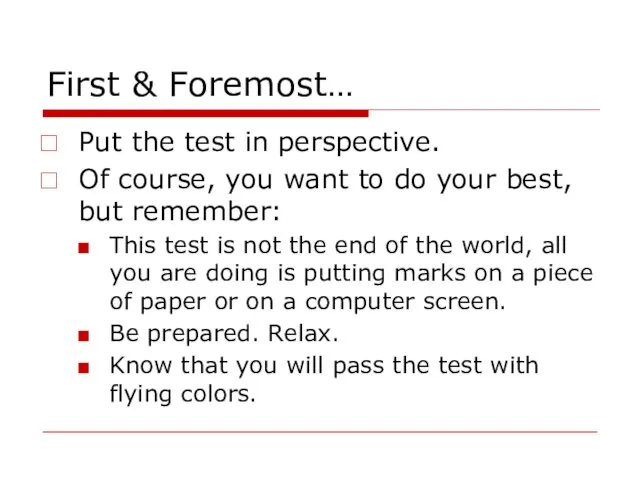
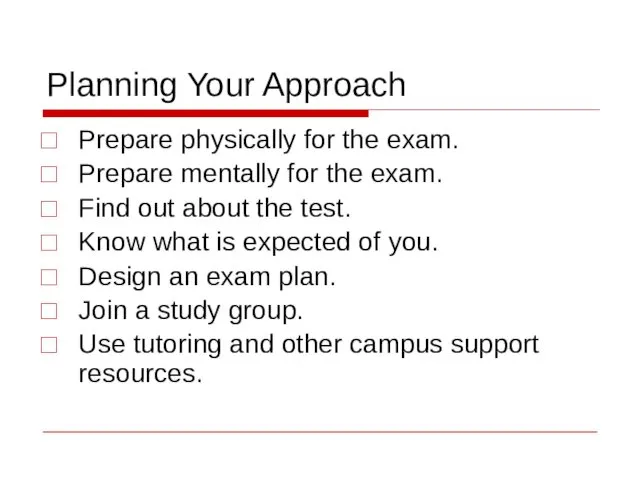
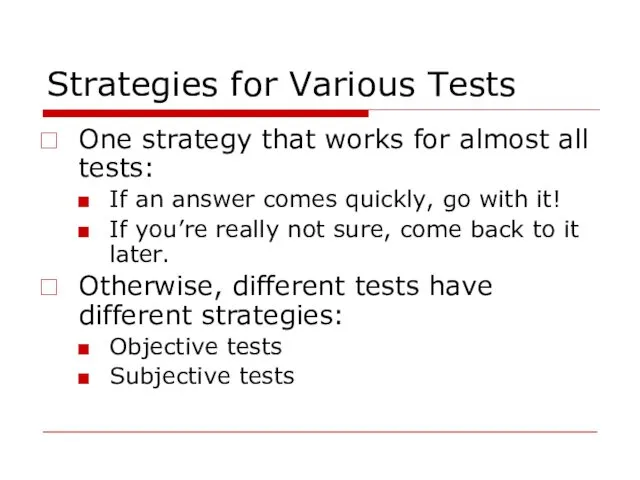
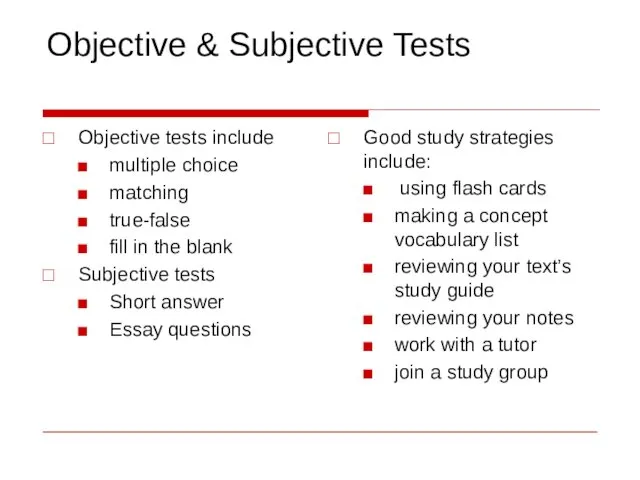
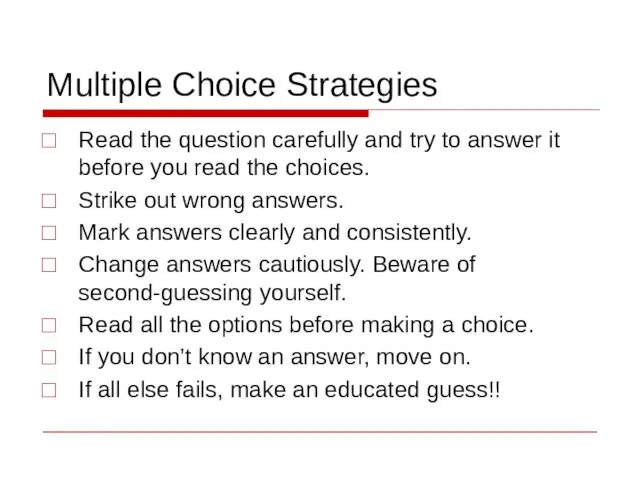
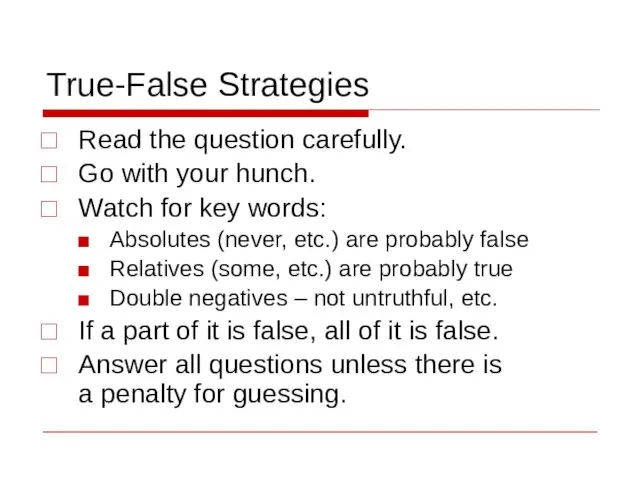
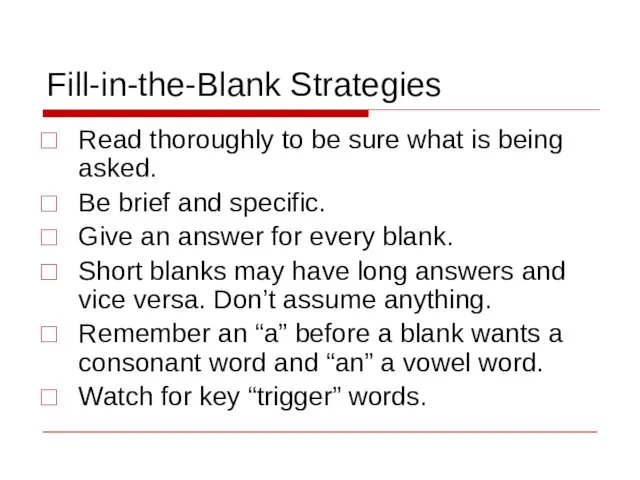
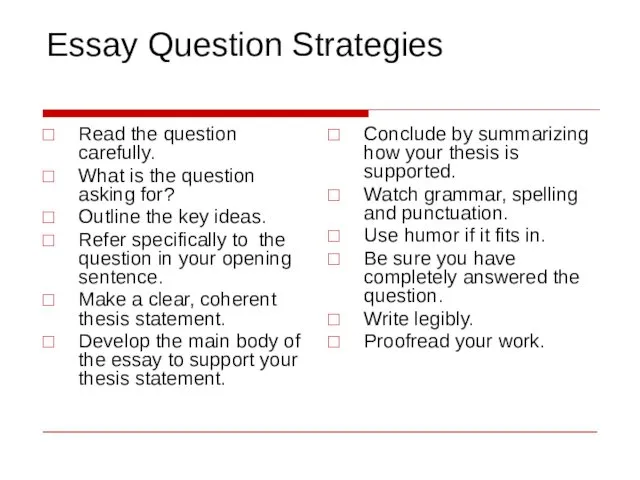
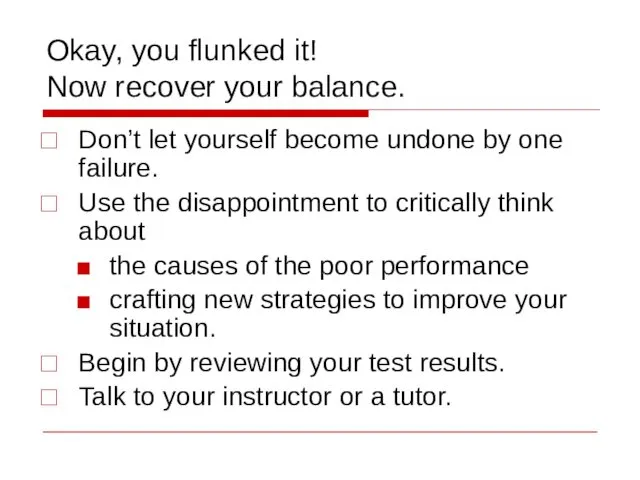
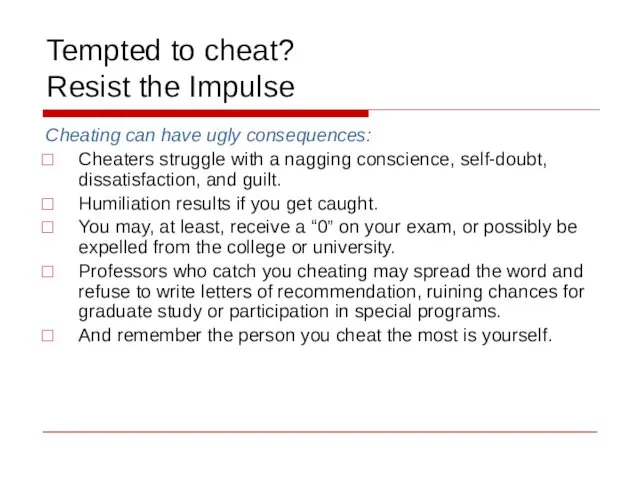
 Управление проектом инициативного бюджетирования
Управление проектом инициативного бюджетирования Лекція 3 (частина 1). Персонал на підприємстві
Лекція 3 (частина 1). Персонал на підприємстві Понятия и категории менеджмента. Basic concepts and management categories
Понятия и категории менеджмента. Basic concepts and management categories Современный менеджер
Современный менеджер Совершенствование системы управления транспортной логистики в организации (на примере ИП Журавков Алексей Валерьевич)
Совершенствование системы управления транспортной логистики в организации (на примере ИП Журавков Алексей Валерьевич) Становление управленческого консультирования
Становление управленческого консультирования Приложение №3. Утверждение организационной структуры в разрезе предприятий Дивизиона Элеваторы Юг
Приложение №3. Утверждение организационной структуры в разрезе предприятий Дивизиона Элеваторы Юг Менеджментті жоспарлау. (Тақырып 8)
Менеджментті жоспарлау. (Тақырып 8) Научные школы в менеджменте
Научные школы в менеджменте Идентификация способностей компании (лекция 5)
Идентификация способностей компании (лекция 5) Как управлять командой на расстоянии
Как управлять командой на расстоянии Формы организации производства
Формы организации производства Что такое 5S и Зачем это нужно
Что такое 5S и Зачем это нужно Развитие теории и практики менеджмента в истории. (Тема 2)
Развитие теории и практики менеджмента в истории. (Тема 2) Функциональное моделирование систем. Методики: SADT - IDEF0, DFD, IDEF3
Функциональное моделирование систем. Методики: SADT - IDEF0, DFD, IDEF3 Основи лідерства
Основи лідерства Специфика экспертизы ценности документов и подготовка их сдачи в архив
Специфика экспертизы ценности документов и подготовка их сдачи в архив The role of accounting in business. (Chapter 12)
The role of accounting in business. (Chapter 12) Кадровая политика и кадровая служба. Лекция 2
Кадровая политика и кадровая служба. Лекция 2 Система распорядительной документации. (Тема 4)
Система распорядительной документации. (Тема 4) Організація роботи служби прийому і розміщення у готелях
Організація роботи служби прийому і розміщення у готелях Инновационный менеджмент
Инновационный менеджмент Уберизация как современный тренд предпринимательской деятельности
Уберизация как современный тренд предпринимательской деятельности Organisation theory. Black box
Organisation theory. Black box Транспортно-логистический сервис
Транспортно-логистический сервис Реструктуризация организации
Реструктуризация организации Управление техническими системами. Особенности состояния и развития автомобильного транспорта. Лекция 1
Управление техническими системами. Особенности состояния и развития автомобильного транспорта. Лекция 1 Социально-экономические технологии гостиничного предприятия. Организации и предоставления услуг питания в средствах размещения
Социально-экономические технологии гостиничного предприятия. Организации и предоставления услуг питания в средствах размещения